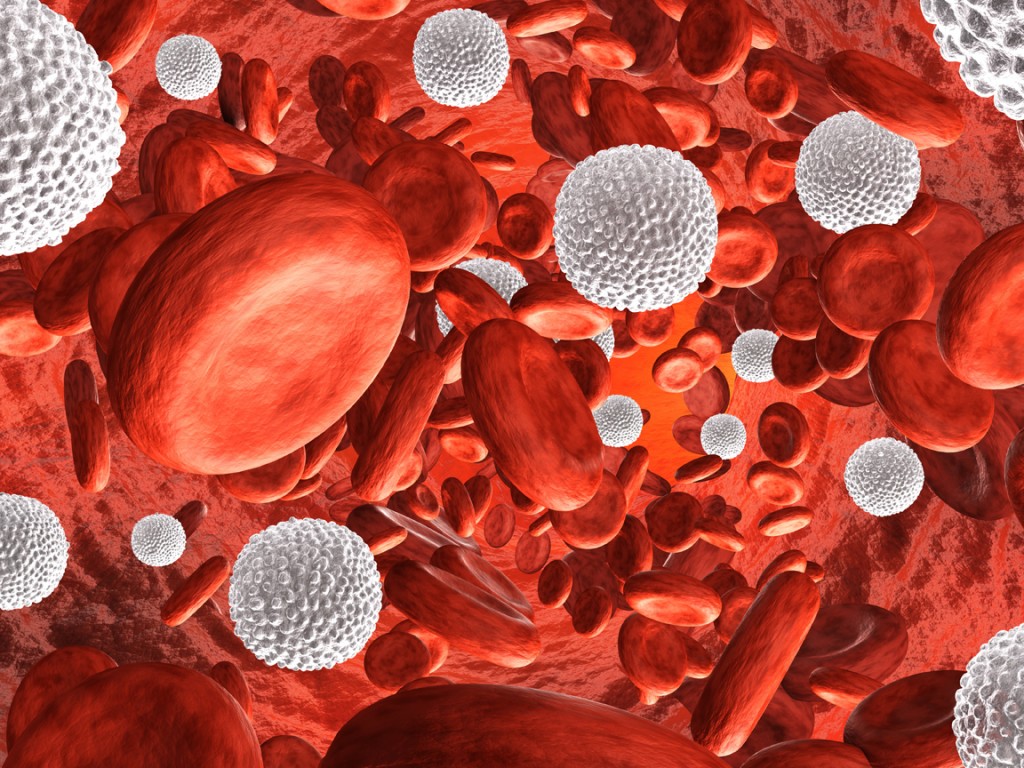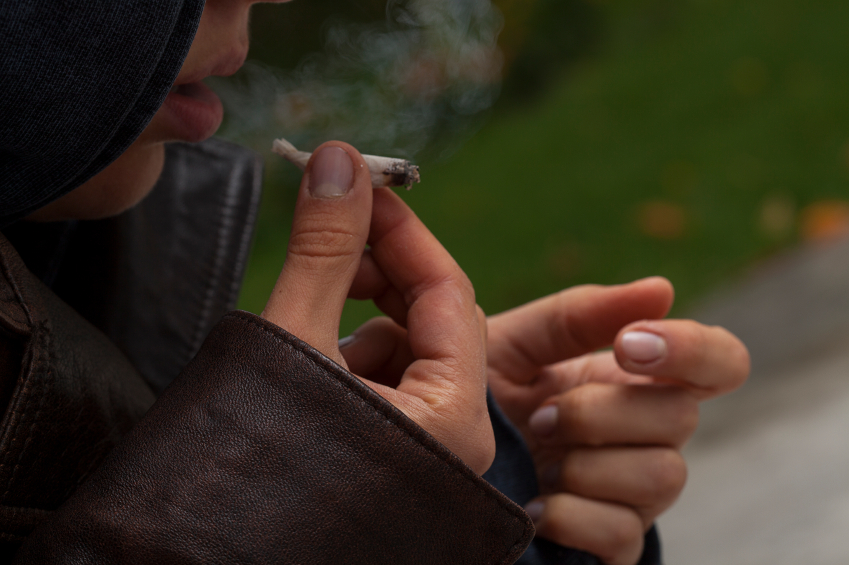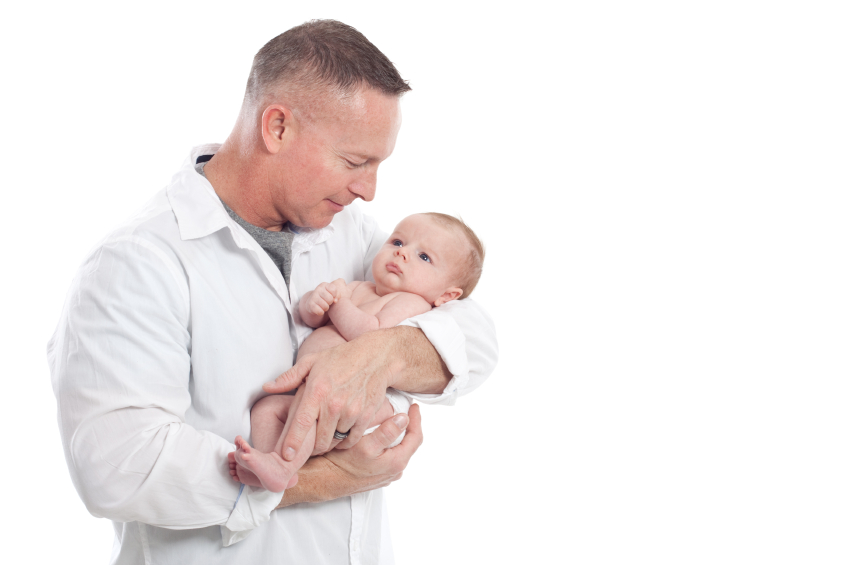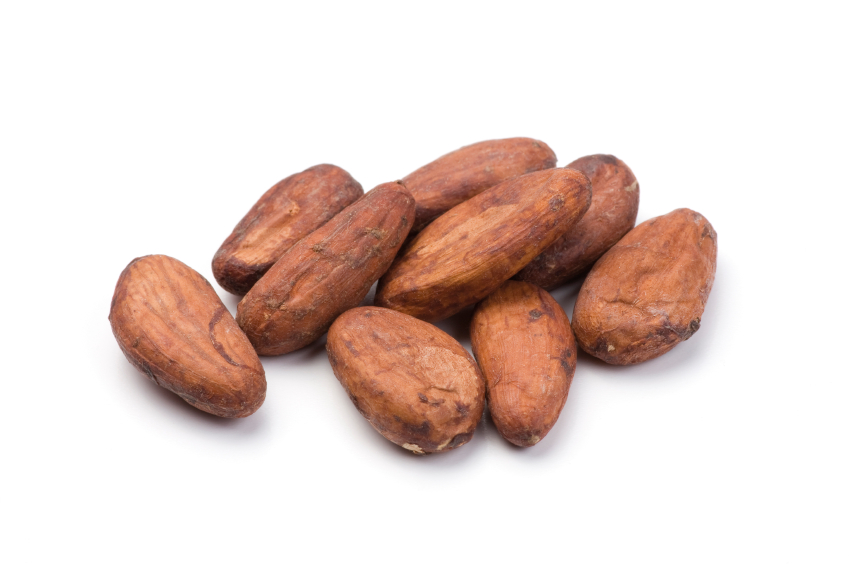Inflammatory Marker NF-kB Elevated in Adolescent Bipolar Disorder
In a poster at the 2014 meeting of the American Academy of Child and Adolescent Psychiatry, researcher Larissa Portnoff reported that NF-kB, a marker of inflammation that can be measured in two types of white blood cells (lymphocytes and monocytes), was significantly elevated in adolescents who had bipolar disorder compared to healthy control participants.
Several other inflammatory markers have been linked to bipolar disorder, including c-reactive protein (CRP) and TNF alpha. The new data about NF-kB suggests that another inflammatory pathway is overactive in the disorder. NF-kB levels did not correlate with the severity of manic or depressive symptoms, as do levels of some other inflammatory markers.
Lamotrigine Effective in Bipolar I Prevention in Adolescents
At the 2014 meeting of the American Academy of Child and Adolescent Psychiatry, researcher Robert Findling reported on a double blind, placebo controlled 36-week study of lamotrigine for children and adolescents with bipolar I disorder. The doses designed for maintenance treatment averaged about 225 mg/day, achieved by very slow increases over time in order to reduce the risk of a serious rash.
Findling found that lamotrigine was more effective than placebo in extending the time until a patient required an intervention for a new mood episode among the older children in the study (aged 13 to 17). Among the younger children in the study (aged 10 to 12), lamotrigine’s effects were not statistically significant compared to placebo. Findling and colleagues concluded that lamotrigine appeared effective in delaying time to onset of a new episode in adolescents with bipolar I disorder.
Lamotrigine is approved by the Federal Drug Administration (FDA) for bipolar disorder in adults only.
Effect Size of Autism Treatments
At the 2014 meeting of the American Academy of Child and Adolescent Psychiatry, Fung et al. presented a meta-analysis of treatments for autism that ranked them in terms of statistical effect size, ranging from 0.9 (large), to 0.5 to 0.8 (medium), to <0.4 (small). The only drug with a large effect size was risperidone, at 0.9. Most effect sizes were medium, including aripiprazole at 0.8 and N-acetylcysteine (NAC) at 0.7. Both clonidine and methylphenidate had effect sizes of 0.6, and tianeptine’s was 0.5.
Fung and colleagues noted that the first two on the list, the atypical antipsychotics risperidone and aripiprazole, often have problematic side effects (such as sedation, weight gain, and motor symptoms) that must be balanced against their effectiveness. In contrast, NAC is well tolerated with few side effects, and two placebo controlled studies showed that it was effective both alone and as an adjunctive treatment to the antipsychotic risperidone.
Lithium Effective In Adolescent Mania And Increases White Matter Volume
At the 2014 meeting of the American Academy of Child and Adolescent Psychiatry, researcher Adelaine Robb reported that in 81 children with mania (aged 7-17), lithium was superior to placebo in reducing the severity of mania measured on the Young Mania Rating Scale. There had been some debate about the efficacy of lithium in young children with mania, but this study clearly indicates lithium’s effectiveness. The drug is approved by the Federal Drug Administration (FDA) for use in patients with bipolar disorder aged 12 and up.
Another researcher, Vivian Kafrantaris, found that in children who averaged 14.5 years of age, lithium increased the volume of the corpus callosum, a bundle of neural fibers that connects the brain’s right and left hemispheres. Lithium also normalized white matter integrity in other neural fiber tracts—the cingulum bundle and the superior longitudinal fasciculus. The authors concluded that lithium may “facilitate microstructural remodeling of white matter tracts involved in emotional regulation.”
Editor’s Note: There is much research showing that in adults, lithium has positive effects on the brain, including increases in hippocampal and cortical grey matter volume. Now it appears that lithium can improve white matter integrity in the developing brain as well.
Halting Marijuana Use Might Improve Memory
Researcher Amanda Roten reported at the 2014 meeting of the American Academy of Child and Adolescent Psychiatry that adolescents who stopped heavy marijuana use showed improvements in multiple areas of learning and memory. These data support previous findings that pot can cause impairments in cognitive functioning, but that abstaining from the drug can bring about improvement relative quickly.
These data contrast with some others. A 2009 study by J. Jacobus et al. in the journal Pharmacology Biochemistry and Behavior suggested that some changes in brain structure resulting from marijuana use, such as decreases in cortical volume, can persist for one to three months following abstinence.
Madeline Meier, another researcher at the meeting, reported that 1,037 participants who used marijuana persistently from about age 13 to age 38 lost an average of 8 IQ points. Controlling for years of education and other potential confounds such as alcohol and drug use did not affect these findings. Moreover, Meier found that “cessation of cannabis use did not fully restore IQ among adolescent-onset cannabis users.”
Editor’s Note: The popular view that marijuana is a benign substance overlooks some key facts. The main pharmacological effect of pot is an amotivational syndrome, causing apathy and lack of drive to participate in work, study, and other activities. Heavy use of pot doubles the risk of psychosis, and this risk is further increased if a user has a common genetic variation in the enzyme catechol-o-methlyl transferase (COMT), which metabolizes dopamine. The more efficient allele of COMT (known as val-56-val, identifying two valine amino acids) lowers frontal cortex dopamine more, and increases the risk of delusions and hallucinations. Marijuana alters brain structure and impairs memory. It may now be legal in some states, and while reducing penalties for smoking marijuana may be a good idea, this does not mean the drug is a harmless substance.
The moral of the story is that avoiding marijuana use in the first place, especially for people with bipolar disorder, should make it easier to get well and stay well. For current marijuana users, N-acetylcysteine (NAC, a nutritional supplement available without a prescription from health food stores) has been shown to help adolescents decrease marijuana use more than placebo.
Multivitamin and Mineral Preparations for Childhood Bipolar Disorder
 Researcher Charles Popper gave a talk at the 2014 meeting of the American Academy of Child and Adolescent Psychiatry on the benefits of nutritional supplements designed to provide multiple vitamins and minerals to children with bipolar disorder and other dyscontrol syndromes, such as attention deficit hyperactivity disorder (ADHD) and oppositional defiant disorder. Popper reviewed the literature on the substantial incidence of vitamin and mineral deficiencies among these children.
Researcher Charles Popper gave a talk at the 2014 meeting of the American Academy of Child and Adolescent Psychiatry on the benefits of nutritional supplements designed to provide multiple vitamins and minerals to children with bipolar disorder and other dyscontrol syndromes, such as attention deficit hyperactivity disorder (ADHD) and oppositional defiant disorder. Popper reviewed the literature on the substantial incidence of vitamin and mineral deficiencies among these children.
A modicum of data support the effectiveness of supplements for children with these disorders. One of these supplements is called EMPowerPlus and is sold online. It is moderately expensive and must be given under the supervision of a knowledgeable treating physician. While it is relatively safe in medication-free children, Popper says it can exacerbate withdrawal reactions from some psychotropic medications.
In addition, EMPowerPlus greatly increases lithium-related side effects, in patients taking lithium, the dose must be reduced to about one-tenth of a normal dose for those who are adding EMPowerPlus.
Popper and another researcher, Mary Fristad, have both seen excellent responses to this type of supplementation in children with bipolar disorder who have been unresponsive to more traditional drugs.
In another study by Rita Aouad et al., 72.3% of 980 children with a variety of psychiatric diagnoses had insufficient vitamin D levels (values < 30 nanograms/ml) and 26.7% had vitamin D deficiency (values < 20 nanograms/ml). These data support the rationale for vitamin D supplementation, especially in those who have low levels to start with.
Older Fathers More Likely to Have Offspring with Bipolar Disorder
In a huge study of Swedish siblings, a sibling was 24.7 times more likely to have bipolar disorder if the father was older (over age 45) at the time of the birth than younger (younger than 24). Older paternal age was also associated with other risks of mental disorders, such as autism, attention deficit hyperactivity disorder (ADHD), suicide attempts, substance abuse and psychosis, but the strongest finding was of a relationship with bipolar disorder.
Mutations that occur during the production of sperm may be responsible for the increased risk of illness in the offspring of older fathers.
The population-based cohort study published by Brian M. D’Onofrio et al. in the journal JAMA Psychiatry included all individuals born in Sweden between 1973 and 2001.
Ratio of Cortisol to CRP May Affect Depression
New research suggests that the ratio of cortisol to C-reactive protein (CRP), a marker of inflammation, may be a biomarker of depression that affects men and women differently. In women, lower ratios of cortisol to CRP were associated with more severe depression symptoms, including poor quality sleep, sleep disturbances, and decreased extraversion. In men, higher ratios of cortisol to CRP were associated with more daytime disturbance and greater anxiety. The study by E.C. Suarez et al. was published in the journal Brain, Behavior, and Immunity.
Further work must be done to confirm whether low cortisol and high inflammation predicts depression in women, while the opposite (high cortisol and low inflammation) predicts depression in men.
Flavanols May Improve Age-Related Memory Loss
Flavanols, which are found in small amounts in raw cocoa, tea leaves, fruits, and vegetables, may be able to improve age-related memory loss. The normal process by which chocolate is made removes all flavanols from cocoa, but the Mars Inc. company recently developed a process to isolate flavanol in powder form.
In a 2014 study by Scott Small et al. in Nature Neuroscience, of 37 participants between the ages of 50 and 69, those who were randomized to a high-flavanol diet (900mg per day, from drinking the powder mixed with water or milk) over a three-month period showed more improvement on a memory test than those participants who were randomized to a low-flavanol diet (10mg per day). The high-flavanol group both scored higher than the other group at the end of the study and showed more improvement relative to their own abilities at the start of the study. Small said that after three months of taking the flavanols, someone who began with a typical memory for a 60-year-old developed a memory more like a 30- or 40-year-old. The high-flavanol group also showed improvement in function in a part of the hippocampus called the dentate gyrus.
Differentiating ADHD and Bipolar Disorder
Three articles in the September 2014 issue of the journal Psychiatric Annals (Volume 44 Issue 9) discussed differentiating pediatric bipolar disorder from attention deficit hyperactivity disorder (ADHD). The first article, by Regina Sala et al., said that reasons to suspect bipolar disorder in a child with ADHD include:
- The ADHD symptoms appear for the first time after age 12.
- The ADHD symptoms appear abruptly in an otherwise healthy child.
- The ADHD symptoms initially responded to stimulnts and then did not.
- The ADHD symptoms come and go and occur with mood changes.
- A child with ADHD begins to have periods of exaggerated elation, grandiosity, depression, decreased need for sleep, or inappropriate sexual behaviors.
- A child with ADHD has recurring severe mood swings, temper outbursts, or rages.
- A child with ADHD has hallucinations or delusions.
- A child with ADHD has a strong family history of bipolar disorder in his or her family, particularly if the child does not respond to appropriate ADHD treatments.
The second article, by this editor Robert Post, Robert Findling, and David Luckenbaugh, emphasized the greater severity and number of symptoms in childhood onset bipolar disorder versus ADHD. Children who would later develop bipolar disorder had brief and extended periods of mood elevation and decreased sleep in the early years of their lives. These, along with pressured speech, racing thoughts, bizarre behavior, and grandiose or delusional symptoms emerged differentially from age three onward. In contrast, the typical symptoms of ADHD such as hyperactivity, impulsivity, and decreased attention were equal in both diagnoses.
In the third article, Mai Uchida et al. emphasized the utility of a family history of bipolar disorder as a risk factor. Moreover, a child with depression plus ADHD is at increased risk for a switch into mania on antidepressants if there is a family history of mood disorders, emotional and behavioral dysregulation, subthreshold mania symptoms, or psychosis.
The differential diagnosis of ADHD versus bipolar disorder (with or without comorbid ADHD) is critical, as drug treatment of these disorders is completely different.
Bipolar disorder is treated with atypical antipyschotics; anticonvulsant mood stabilizers, such as valproate, carbamazepine, or lamotrigine; and lithium. Only once mood is stabilized should small doses of stimulants be added to treat residual ADHD symptoms.
ADHD, conversely, is treated with short- or long-acting stimulants such as amphetamine or methylphenidate from the onset, and these may be augmented by the noradrenergic alpha-2 agonists guanfacine or clonidine. The selective noradrenergic re-uptake inhibitor atomoxetine is also approved by the Federal Drug Administration (FDA) for the treatment of ADHD. The dopamine-active drug bupropion and the anti-narcolepsy drugs modafinil and armodafinil have mild anti-ADHD effects but have not been FDA-approved for that purpose.










